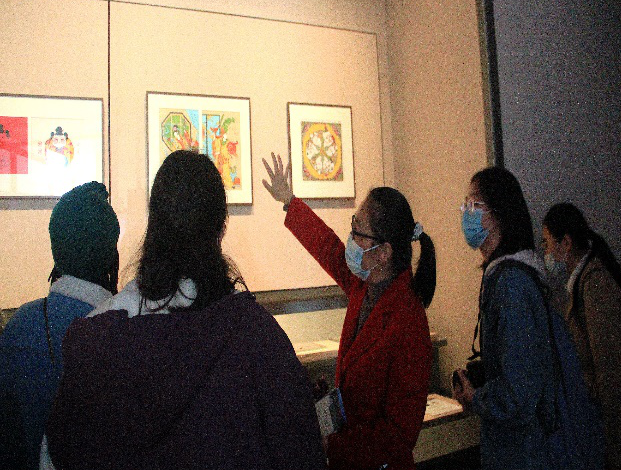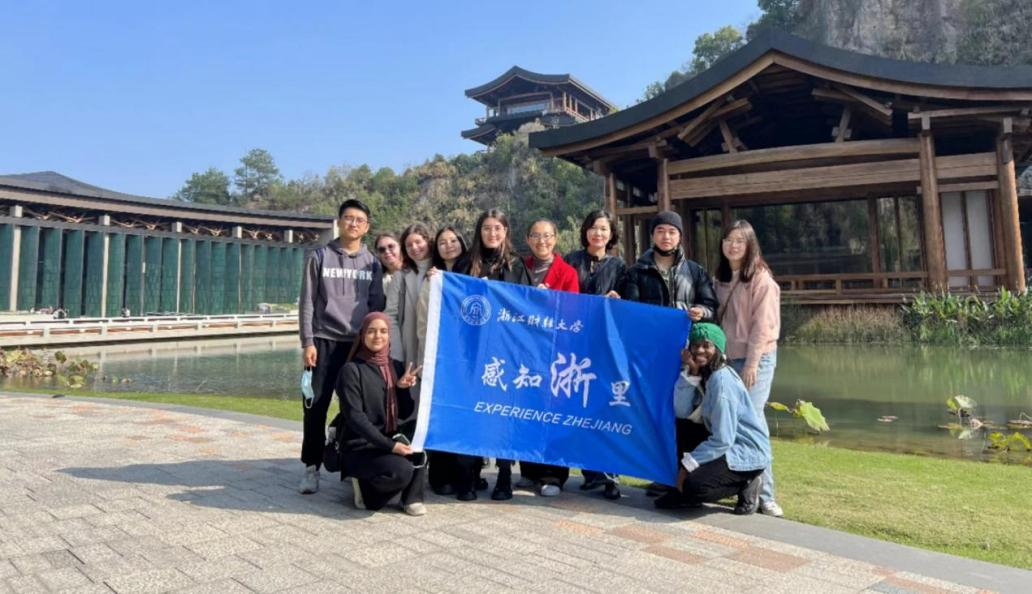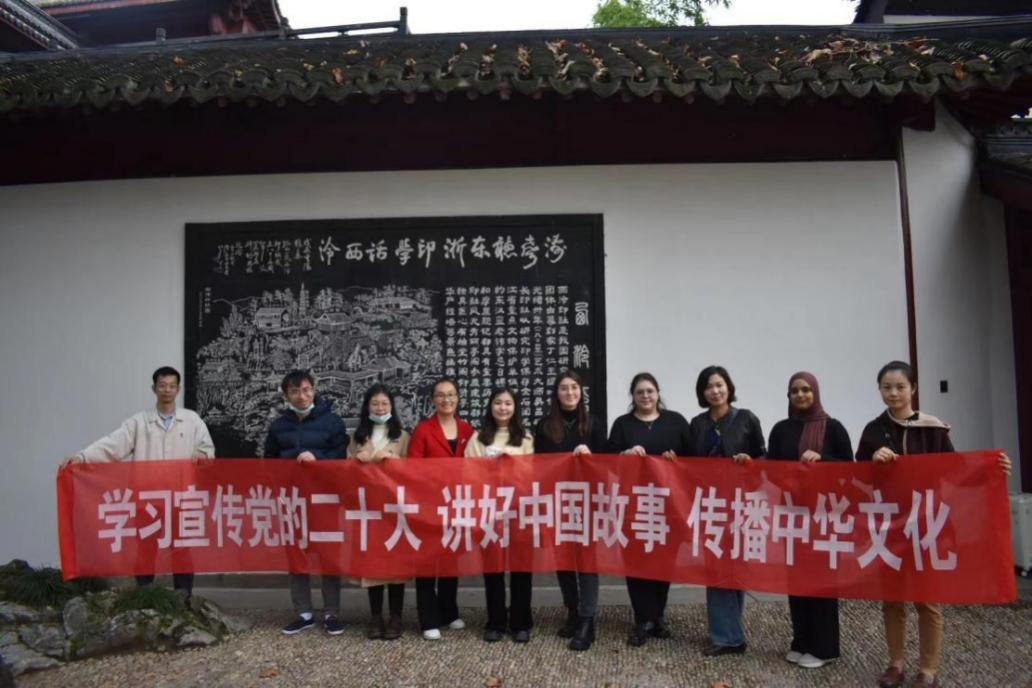To fully implement the guiding principles of the 20th CPC National Congress, guide international students to appreciate the cultural heritage of Zhejiang Province, which has a long history and numerous historic celebrities, and immerse them in the Jiangnan culture and Zhejiang folk customs, the School of International Education and Studies organized teachers and students to visit the National Archives of Publication and Culture, Hangzhou Branch, on November 25.

Teachers and students visited four exhibitions, including “A Realm Noted for its Books, an Overview of Bibliological Culture in Jiangnan,” “Zhejiang School in a Flourishing Age -- Zhejiang Cultural Research Project Achievements Exhibition,” “Legendary Figures, Zhejiang Historical and Cultural Celebrities Exhibition,” and “The Tidal Bore of the Qiantang River, the Bibliological Exhibition of Zhejiang as a Showcase of China.” Through this visit, they gained a deeper understanding of the origin, technique, culture, and value of China’s bibliology, as well as the profound historical origins and cultural history of Zhejiang. Additionally, they had a real taste of the rich cultural heritage and contemporary value of Chinese civilization and experienced the cultural landmark in the new era which combined Song Dynasty-style architecture with modern construction technology.

From the emblazonry of Liangzhu Jade Cong and inscriptions of the bronze sword in the Warring States Period to the precious versions of the Communist Manifesto in different languages, the rich collections in the National Archives of Publications and Culture showcased the advantages of the 5000-year-old Chinese culture to the fullest.

After the visit, the teachers and students continued to visit numerous revolutionary historical sites in Beishan Street and Solitary Hill to trace the profound culture of Hangzhou and further experience a mild Jiangnan which had a rich cultural heritage with a long history.

In recent years, ZUFE has fully utilized its disciplinary advantages to strengthen the international communication capabilities to better tell China’s stories and make China’s voice heard. The SIES will also continue to integrate the communication of the value of mainstream Chinese culture and fine traditional civilization into international classroom teaching and cultural practice, striving to better tell China’s stories and make our voice heard.
(Correspondent: Chen Sihan)
